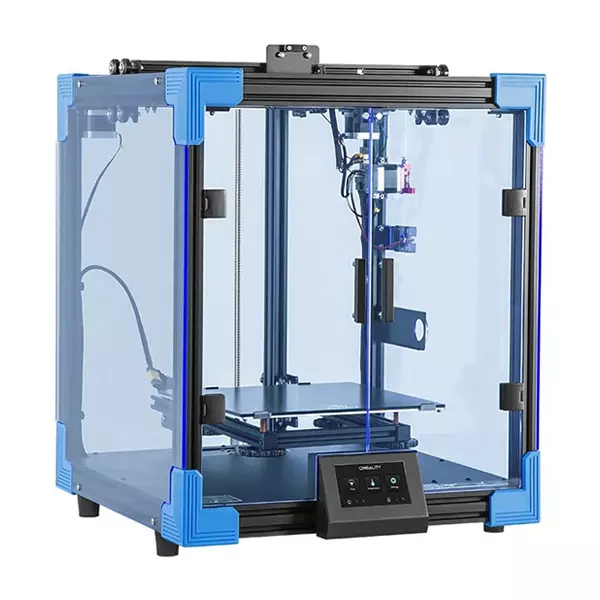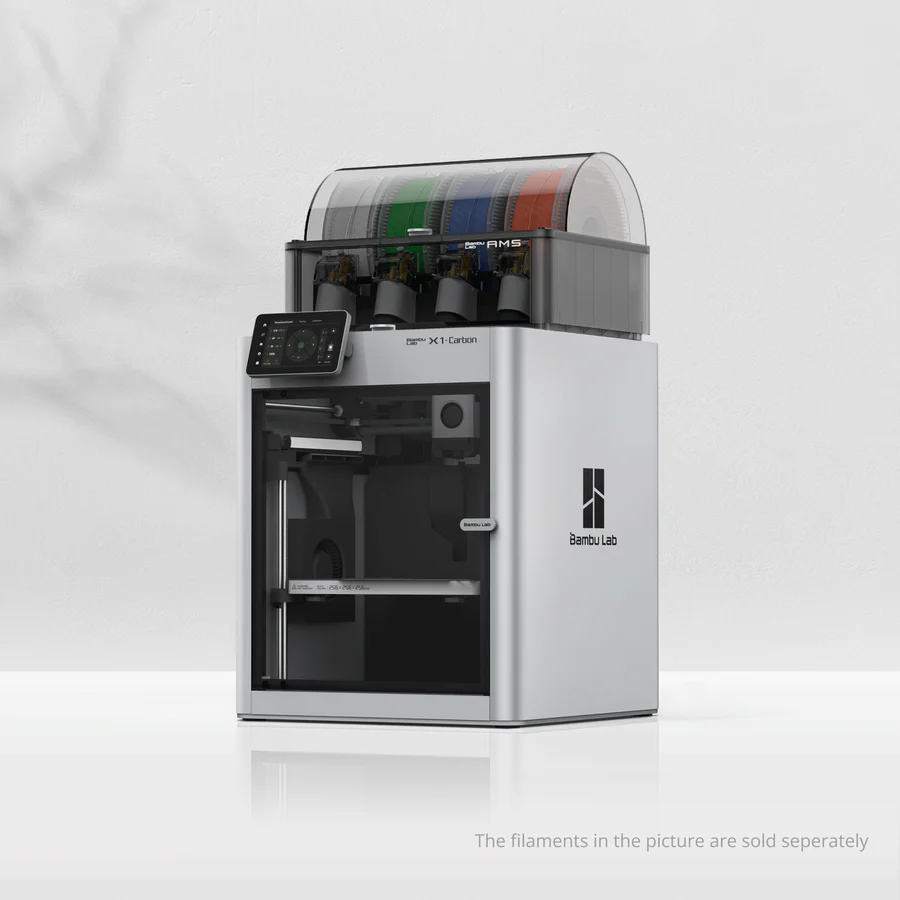Compare Ender 6 vs X1 carbon
Comparison between the best 3D printers
Choose the best 3D printer at the best price. The cheapest 3D printers are here.
Buy a 3D printer here with 3D Fila.
 |
 |
|
| Model | Ender 6[BUY Ender 6] |
X1 carbon |
| Printing Material | Filament | Filament |
| Buy Filament for Creality 3D Ender 6 | Buy Filament forBambu Lab X1 carbon | |
| Estimated price | $499,00 | $1449,00 |
| Manufacturer | Creality 3D | Bambu Lab |
| Release Year | 2020 | 2023 |
| Print Volume [mm] | 250x250x400 | 256x256x256 |
| Printer Size [mm] | 495x495x650 | 389x389x457 |
| Weight [kg] | 22 | 14,13 |
| Power Loss Recovery | YES | YES |
| Enclosed printer | YES | YES |
| Bed Leveling | Manual | Automatic |
| Filament End Sensor | YES | YES |
| Bed type | Heated | Heated |
| Power supply system | Bowden | Direct Drive |
| Standard nozzle | 0,4 | 0,4 |
| Maximum Nozzle Temperature [°C] | 260 | 300 |
| Maximum Bed Temperature [°C] | 100 | 120 |
| Maximum printing speed [mm/s] | 150 | 500 |
| Filament holder | YES | YES |
| Camera for supervision | NO | NO |
| Recommended filaments | PLA, TPU, ABS, PETG | PLA, PETG, TPU, PVA, PA, PA-CF, Nylon, PC |
| Recommended slicers | Cura, Simplify, Slic3r | Bambu Studio, Super Slicer, Cura, Prusa Slicer, Orca |
| Maximum Resolution [mm] | 0,1 | 0,1 |
| Processor | 32 bits | Quad ARM A7 1.2 GHz |
| Display | Touchscreen TFT 4,3'' | Touchscreen 5'' |
| Power Supply | 24V / 504W | 350 W |
| Connectivity | SD / USB | Wifi, Bambu bus, Cartão SD |
| Operating systems | Windows, Mac, Linux | Windows, Linux, Macbook |
| Date of registration in the system | 2021-04-15 | 2024-04-10 |
| Release date | 2020 | 2023 |
| Extra features | The Creality Ender 6 stands out in the world of 3D printers with its CoreXY system, offering fast and high-quality prints. With a robust design, it has acrylic panels to protect against air currents, optimizing the printing of materials that require higher temperatures. It features a generic Creality hotend, effective up to ~240°C. Its differentials include 10mm GATES belts, promoting stability at high speeds, and a 360W power supply for reliable performance. The machine also has an intuitive user interface through a 4.3-inch touchscreen. | The Bambu Lab X1 Carbon revolutionizes 3D printing with stunning design, high print speeds, and a streamlined user experience. It stands out with its CoreXY system, a hotend capable of reaching 300°C, allowing for a wide range of filaments. Its LiDAR-assisted bed leveling system, vibration compensation, and AMS multicolor printing capability raise the industry standard. Print quality is impressive, with the ability to fine-tune for perfection. The X1 Carbon, with its closed build volume, not only promises but also delivers one of the most advanced 3D printing experiences available to consumers. |
| Support for multiple colors and materials (AMS and CFS) | NO | YES |
Notes * |
||
| Cost-benefit | 7 / 10 | 7 / 10 |
| Hardware | 2.5 / 10 | 5.6 / 10 |
| Tela | . | . |
| Print volume | 4 / 10 | 4 / 10 |
| Performance | 1 / 10 | 4 / 10 |
| [BUY Ender 6] |
Conclusion |
| In comparing the Creality Ender 6 and the Bambu Lab X1 Carbon, both printers have unique strengths that cater to different user needs and budgets. The Ender 6 stands out as an economical choice for those entering the 3D printing space, offering a solid build quality, a generous print volume, and reliable performance at a fraction of the cost of more advanced models. It provides essential features like a heated bed, a filament sensor, and a CoreXY system for decent print speeds, despite requiring manual bed leveling. It is compatible with various filaments, making it a versatile option for hobbyists and casual users. On the other hand, the Bambu Lab X1 Carbon represents the pinnacle of 3D printing technology with its advanced features such as automatic bed leveling, higher temperature capabilities, and significantly faster printing speeds. It is designed for users who prioritize performance and are willing to invest in more complex projects, thanks to its ability to handle a wider range of materials, including specialty filaments. The user experience is further enhanced by its touchscreen interface and extensive connectivity options. Ultimately, the choice between these two printers comes down to user requirements and budget. The Ender 6 is ideal for newcomers seeking an affordable yet reliable printer, while the X1 Carbon caters to experienced users who demand high performance and versatility in their 3D printing endeavors. Both models offer good cost-benefit ratios in their respective categories, making them worthy contenders in today's 3D printing market. |

